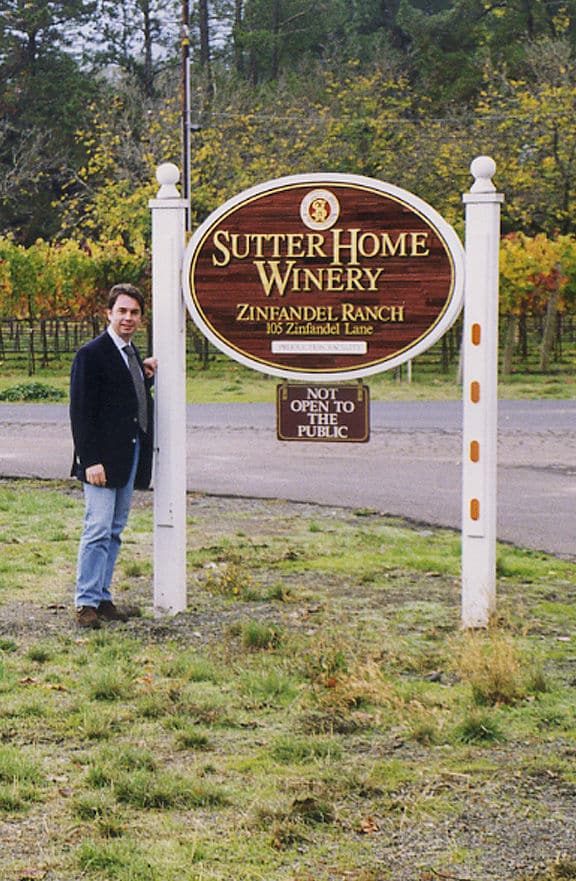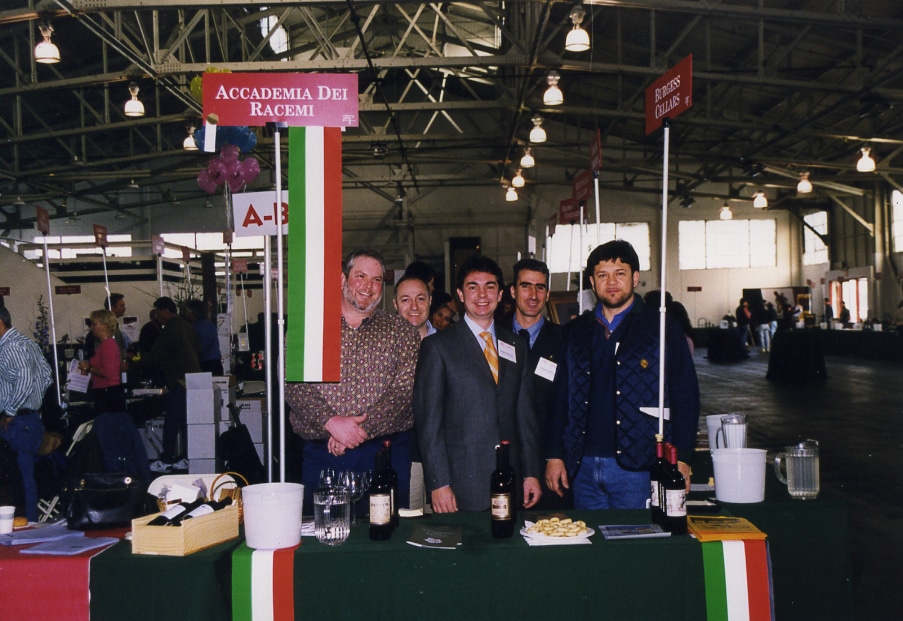The story of Primitivo and Zinfandel is made up of encounters. It begins in 1967, when Professor Austin Goheen of the Davis University (California), returning from a phytopathology conference in Germany, stopped in Bari to greet his colleague prof. Giovanni P. Martelli who, in turn, had been to Davis a few years earlier.
The two academics went for dinner in a restaurant in Bari and prof. Goheen noticed that the wine ordered by his friend Martelli – a Primitivo – was incredibly similar to the Zinfandel from his land. Since that evening the destinies of the two vines began to cross, taking up the work of Italian and American researchers and scientists who gradually debated the probable identity of the two grapes.
In the 90s Californian
Zinfandel was already well known and appreciated in the American market, also because it was considered to be the “only original grape variety” not coming from Europe. The Primitivo di Manduria instead, with our Felline, had just broken through the wall of widespread prejudice on Puglia and its wines, until then exclusively used in bulk trade.
In addition to the Accademia dei Racemi zoning project, we also wanted to intervene in the research and historical reconstruction of the relationship with the American Zinfandel. What intrigued us above all was the unknown origin of the name “Zinfandel”, attributed by historians to an incorrect classification of a vine originating in Hungary called Zierfahnler. Supporting the Apulian or rather “Mandurian” origin of the Zinfandel, we found intriguing and very likely the hypothesis that its name could derive from the famous “Sinfarosa” city quarter, well known among local farmers for the quality of its Primitivo.
So it was that on one of our many trips to California, we got hold of scions from one of the most prestigious Zinfandel vineyards in America: Ridge’s Geyserville. We took them to Manduria and over grafted exactly in the Sinfarosa area next to other Primitivo vineyards to observe their similarities and differences. Meanwhile Professor Carole Meredith of the Davis University had definitively finalized matters by establishing, based on her genetic research of the two vines’ DNA, that Zinfandel and Primitivo are identical.
Our Zinfandel Sinfarosa, repeatedly awarded the Tre Bicchieri by Gambero Rosso, is the only non-American wine admitted to the ZAP (Zinfandel Advocates and Producers) Gran Festival held every year in San Francisco.




Felline Soc. Agricola a.r.l.
S.Comunale Santo Stasi I, 42
74024 Manduria (Ta) Italia
P.I. – C.F. 02939250730
Copyright 2023 – Privacy and Cookie Policy – Comunic@ndo







Through collaboration with viticulturists from different territories of the region and oenologists with experience in quality winemaking, new productions from grapes that had until then been completely neglected or unknown are “offered” to the knowledge of journalists and importers: Ottavianello, Susumaniello (recovered by Gregory with the Torre Guaceto company), Fiano Minutolo (Sammartino company), as well as new versions of Negroamaro and Malvasia Nera (Castel di Salve company), Moscato Reale di Trani (De Filippo company), Troia and Montepulciano grapes (Paolo Petrilli company) and obviously the zoning of Primitivo (red, white, black earth and sand).
The Accademia dei Racemi includes among its consultants, in addition to Roberto Cipresso and Fabrizio Perrucci, Enzo Moiso and Luca Boaretti. Some companies created by the Accademia dei Racemi are still present with honor on the market. In addition to being talked about for its wines, the Accademia dei Racemi becomes a unique reference in the regional panorama for research, the study and experimentation of native vines.
For the examinations conducted on the relationships between Primitivo and Zinfandel, the history and experiments, as well as the request to update the list of synonyms regulated by the European Union, Gregory Perrucci is admitted as the only “non-American member” in the prestigious Californian association called Zap (Zinfandel Advocates and Producers).
A few years later, precisely in June 2002 after the scientific decree of the identity between Zinfandel and Primitivo, as well as between them and the Croatian Crnjelak Kastelansky, he was a speaker at the first International Conference on Zinfandel.
He gives a talk on the origins of primitivo and its relationship with Zagarese (who has passed away) in a joint session with Doug Beckett (Californian winemaker) and the legendary Miljenko Grgich, an icon of American winemaking for having produced two of the wines that defeated the French wines in the 1976 world blind competition in Paris.